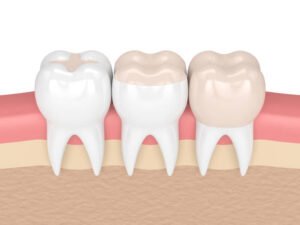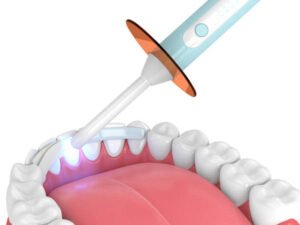Peri-implantitis is a serious condition that affects dental implants. It’s an inflammatory process that leads to bone loss around the implant. If left untreated, it can result in implant failure. Many wonder if peri-implantitis can be detected through an X-ray. This article aims to answer that question. It will provide valuable information on diagnosing and treating peri-implantitis.
What is Peri-Implantitis?
Peri-implantitis is similar to gum disease but occurs around Dental implants. It involves inflammation of the gums and bone loss around the implant. If untreated, it can cause the implant to fail. Early detection and management are crucial to maintain oral health and the longevity of dental implants.
How is Peri-Implantitis Detected?
Dentists use several methods to detect peri-implantitis. These include clinical examinations and imaging techniques like X-rays. But how effective are X-rays in detecting peri-implantitis?
X-Rays and Peri-Implantitis
X-rays are a valuable tool in dental diagnostics. They provide detailed images of the bone and structures around teeth and implants. However, X-rays have limitations. They may not always show the early stages of peri-implantitis.
Can X-Rays Show Early Peri-Implantitis?
In the early stages, peri-implantitis may not cause significant bone loss. This means that an X-ray might not detect it. Early peri-implantitis is often found by clinical signs. These signs include bleeding gums, swelling, and pus around the implant. A dentist might use a periodontal probe to check for pockets around the implant. These pockets can indicate inflammation and early bone loss.
Advanced Peri-Implantitis on X-Rays
As peri-implantitis progresses, it causes more bone loss. At this stage, X-rays become more useful. They can show the extent of bone loss around the implant. This helps the dentist to diagnose the severity of the condition and plan the appropriate treatment.
Other Diagnostic Tools
While X-rays are helpful, they are not the only tool for diagnosing peri-implantitis. Other imaging techniques can provide more detailed images. For example, 3D cone-beam computed tomography (CBCT) is one. These advanced imaging methods can show the bone structure in three dimensions, making it easier to detect bone loss.
Importance of Regular Check-Ups
Regular dental check-ups are crucial for early detection of peri-implantitis. During these visits, the dentist will check your implants for any signs of inflammation or bone loss. Early intervention can prevent the progression of peri-implantitis and save your dental implants.
Treatment Options
The treatment of peri-implantitis depends on the severity of the condition. In the early stages, non-surgical treatments might be sufficient. These include professional cleaning, antibiotic therapy, and improving oral hygiene practices. In more advanced cases, surgical intervention may be necessary. This can involve procedures to remove infected tissue, regenerate lost bone, and stabilise the implant.
Preventing Peri-Implantitis
Prevention is always better than cure. Maintaining good oral hygiene is key to preventing peri-implantitis. Brush your teeth and implants twice a day, and floss daily. Regular visits to the dentist for professional cleanings and check-ups are also important. Avoid smoking, as it increases the risk of peri-implantitis.
Conclusion
Peri-implantitis is a serious condition that can compromise the health of your dental implants. X-rays are useful for finding advanced peri-implantitis. But, they may not show early signs of the condition. You need regular dental check-ups. You also need good oral hygiene. These are essential for finding and preventing peri-implantitis. If you have dental implants, take care of them to ensure they last for many years. Visit Old Town Dental Care for regular check-ups and expert advice on maintaining your implants.
Knowing the role of X-rays in finding peri-implantitis can help you stay informed. They are key to understanding your dental health. Always consult your dentist if you see inflammation around your implants. Early detection and treatment are key to maintaining the health and longevity of your dental implants. Remember, prevention is the best defence against peri-implantitis.
Frequently Asked Questions
How is peri-implantitis detected?
We detect peri-implantitis through clinical exams, X-rays, and other imaging techniques like CBCT. They show bone loss and inflammation around the implant.
Can X-rays detect early peri-implantitis?
X-rays may not detect early peri-implantitis due to minimal bone loss. Clinical signs like bleeding gums and swelling are better indicators in the early stages.
What are the treatment options for peri-implantitis?
Options for treatment include: professional cleaning, antibiotics, and better oral hygiene. These are for early stages. In severe cases, surgery may be needed. It removes infected tissue and regrows lost bone.
How can peri-implantitis be prevented?
Maintain good oral hygiene by brushing and flossing daily, and attend regular dental check-ups. Avoid smoking to reduce the risk of peri-implantitis.
Why are regular check-ups important for implant health?
Regular check-ups allow early detection of peri-implantitis. This lets us intervene early to stop it from getting worse. It also ensures the long life of dental implants.







